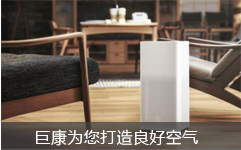防止空氣凈化工程微粒子污染的四項(xiàng)基本原則
- 發(fā)布人:
- 發(fā)布日期:2017-04-13 17:47:35

空氣凈化工程的浮游微粒子濃度,使用高性能的過(guò)濾器即可容易達(dá)到零水平,實(shí)際的生產(chǎn)現(xiàn)場(chǎng)由于作業(yè)者、機(jī)器、周邊機(jī)械的發(fā)塵及基板運(yùn)送時(shí)所接觸的零件材料的發(fā)塵等,在制造品周邊揚(yáng)起了少許的微粒子,因而造成了元件清潔面的粒子污染。
Air purification engineering of planktonic particles concentration, using high performance filter can be easily reached the zero level, actual production site due to the operator and machine, peripheral machinery of dust and substrate transport the contact parts of the material dust etc., in manufacturing goods surrounding raised a little particles, resulting in the components clean surface particle pollution.
空氣凈化工程 http://www.jnjkjh.com/ 該如何防止微粒子污染呢?應(yīng)遵守下列四項(xiàng)基本原則:
How to prevent the pollution of particulate? The following four basic principles should be followed:
1) 不攜入
1) not to bring in
在無(wú)塵室內(nèi)不攜入微粒子的方法有:
In the clean room and do not carry particles with details:
作業(yè)員進(jìn)入無(wú)塵室前,機(jī)臺(tái)、零件攜入前應(yīng)進(jìn)行清潔處理;
Before entering the clean room, the operator should be cleaned with the machine and the parts before entering the clean room;
進(jìn)入無(wú)塵室者在更衣室要穿著不發(fā)塵、不產(chǎn)生靜電的具特殊導(dǎo)電性纖維材質(zhì)的無(wú)塵服、帽、鞋、手套、口罩等。
Into the clean room in the dressing room to wear no hair, no static electricity with a special conductive fiber material of clean clothes, caps, shoes, gloves, masks, etc..
通過(guò)風(fēng)淋室時(shí)利用高速干凈空氣除去附在衣服表面的粒子后,才能進(jìn)入無(wú)塵室。
Through the air shower room, the use of high speed clean air to remove the particles attached to the surface of the clothes, in order to enter the clean room.
機(jī)器及材料帶進(jìn)無(wú)塵室前,應(yīng)盡可能在密封狀態(tài)下帶進(jìn)無(wú)塵室前室保養(yǎng)后用超純水擦拭,經(jīng)風(fēng)淋室吹淋后才進(jìn)入無(wú)塵室。
In front of the machine and material into the clean room, should as far as possible in a sealed condition in the maintenance of the clean room antechamber with ultrapure water wipe, after the air shower room shower before entering the clean room.
無(wú)塵室中須全程穿戴密閉式安全帽及佩戴附有filter的排氣用小型fan于腰間。
With a small fan in the waist to wear full exhaust closed type safety cap and worn with a filter of the clean room.
2) 不發(fā)生
2) no
在控制最大污染源--人在無(wú)塵室內(nèi)的微粒子發(fā)塵量的同時(shí),也應(yīng)控制第二大污染源—制造機(jī)臺(tái)的發(fā)塵量。因物品在移動(dòng)時(shí),所產(chǎn)生的摩擦及接觸剝離會(huì)造成發(fā)塵,而物品在移動(dòng)時(shí)也會(huì)有微粒子的發(fā)生。故為了控制空氣凈化工程發(fā)塵量達(dá)到最小限度應(yīng)采取以下對(duì)策:
In control of the largest pollution source - the dust in the dust of the dust particles in the dust chamber, it should control the second pollution sources - making machine dust. Because of the movement of goods, the resulting friction and contact stripping can cause hair dust, while the goods will have the occurrence of particles in the movement. Therefore, in order to control the air purification project dust quantity to reach the minimum should take the following measures:
減少接觸剝離發(fā)塵的動(dòng)作形態(tài);
Reduction of the action form of contact stripping hair;
采用磨耗發(fā)塵小的材質(zhì);
The material used in the wear hair dust;
采用發(fā)塵小的潤(rùn)滑油;
Use small lubricating oil;
機(jī)臺(tái)應(yīng)用空壓浮上的非接觸化工作原理。
Principle of non - contact operation of air pressure floating on the machine.
3) 不儲(chǔ)備
3) No Reserve
若能徹底實(shí)施“不攜入”技術(shù),空氣凈化工程的潔凈度就可以維持。但現(xiàn)實(shí)中人和物品的頻繁出入及制造機(jī)臺(tái)的掣動(dòng),在廣大的無(wú)塵室內(nèi)要有完全潔凈度是不可能的。因此“不儲(chǔ)備”技術(shù)快速地在過(guò)濾器中應(yīng)用以除去已發(fā)生的微粒子變得非常重要。通常已發(fā)生的微粒子會(huì)依據(jù)重力及靜電吸附力而停留在周邊的物體表面。突發(fā)性的振動(dòng)及不穩(wěn)定的氣流會(huì)使這些累積微粒在空氣中再度揚(yáng)起,增加了重大微粒子污染的危險(xiǎn)性。
If the implementation of the "no" technology, air purification project can be maintained clean. But reality of people and goods was frequent and manufacturing machine button, in the majority of the clean room to have completely cleanliness is not possible. Therefore, the "non - reserve" technique is applied to the filter to remove the particles that have been taken place very important. Usually the particles that have been taken will remain in the vicinity of the object surface by gravity and electrostatic forces. The sudden vibration and unstable air flow can cause the accumulation of particles to be raised again in the air, and increase the risk of contamination of the major particles.
在最高等級(jí)的無(wú)塵室中從天花板到地面,完全除去微粒子的空氣須在0.3-0.4m/s的速度作垂直向下流動(dòng)。這是在約10秒內(nèi)將室內(nèi)空氣和完全過(guò)濾空氣完全交換所計(jì)算出來(lái)的數(shù)值。同時(shí),空氣的流向也必須要有精確的控制才行。特別要保證氣流的流通路徑暢通無(wú)阻,因?yàn)樵诹魍窂街杏姓系K物的話,容易產(chǎn)生空氣空氣渦流而形成空氣的滯留區(qū)域,使得附近已發(fā)生的微粒子無(wú)法快速排除而長(zhǎng)時(shí)間漂流在無(wú)塵室內(nèi),而一部分會(huì)附著在周邊機(jī)器設(shè)備的表面而引起污染。
From the ceiling to the ground in the highest level of the clean room, the air to completely remove the particles from the ceiling is required to be vertically downward at the speed of 0.3-0.4m/s. This is calculated by the full exchange of the indoor air and the fully filtered air in about 10 seconds. At the same time, the flow of air must have a precise control. Especially to ensure the smooth flow of the flow path, because there are obstacles in the flow path, easy to produce air vortex and the formation of air stagnation zones, making near has occurred particles cannot quickly ruled out long time drifting in the clean room, and a branch of attachment in the peripheral equipment of surface caused by pollution.
控制氣流可防止微粒子累積,但對(duì)于帶電表面的微粒累積就無(wú)法防止。為了防止由靜電吸附而引起的微粒附著,通常在無(wú)塵室內(nèi)會(huì)使用帶電程度在數(shù)十伏以下的導(dǎo)電性材料。而對(duì)于制造品本身的帶電,則采用帶電程度很少的搬送形態(tài)及接觸部品材料,并藉由除電裝置進(jìn)行除電。
Control air flow can prevent the accumulation of particles, but can not prevent the accumulation of particles on the charged surface. In order to prevent the particles attached to the particles by electrostatic adsorption, it is usually used in the clean room to use the electrical conductivity of the electricity in the following several decades. And for the manufacture of the product itself, the use of electricity to carry out the form and the contact of the material, and by the electric device.
4) 排除/除去
4) exclusion / removal
在無(wú)法避免大量微粒子發(fā)生的機(jī)臺(tái)中,為了不讓無(wú)塵室內(nèi)產(chǎn)生微粒子,因此直接做對(duì)外排氣的動(dòng)作,即所謂的局部排氣。針對(duì)排氣的對(duì)策如下:由于導(dǎo)入同量的外氣是必要的,但會(huì)伴隨大量的能源消耗。所以無(wú)法說(shuō)是絕對(duì)理想的對(duì)策。因此盡可能地在壓縮排氣量的同時(shí),不僅僅是向無(wú)塵室外排氣,而應(yīng)采用將除去粒子后的空氣再回流到無(wú)塵室內(nèi)之對(duì)策。
In order to prevent the occurrence of a large number of particles in the machine, in order not to produce particles, so directly do the external exhaust, the so-called local exhaust. The countermeasures are as follows: the introduction of exhaust gas amount is necessary, but will be accompanied by a large amount of energy consumption. So can not say that is absolutely ideal strategy. Therefore, as far as possible in the compression of the exhaust volume, not only to clean out the air, and should be used to remove the air and then return to the dust chamber of the countermeasures.









